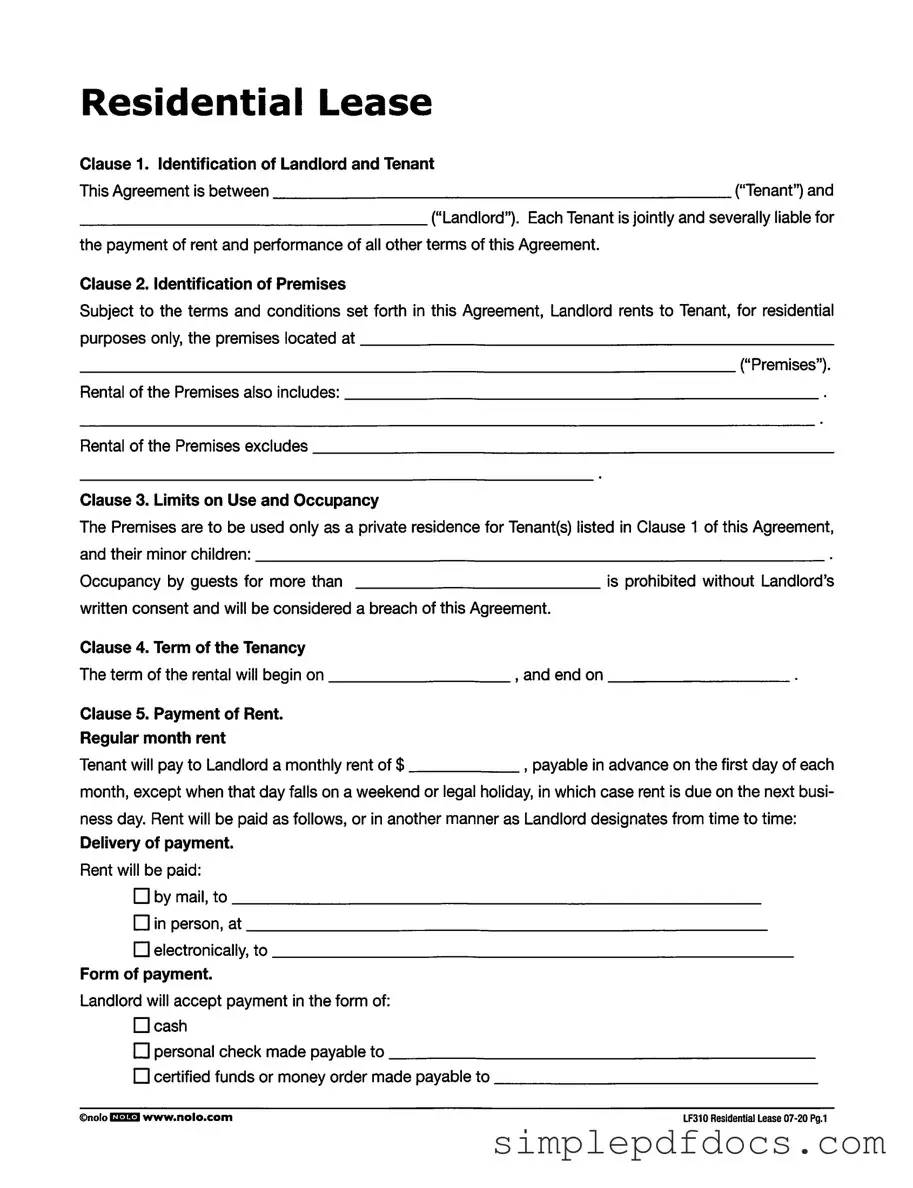The LF310 Residential Lease form serves as a crucial document for both landlords and tenants, outlining the terms of their rental agreement in a clear and organized manner. At its core, this form identifies the parties involved—both the landlord and the tenant—establishing their responsibilities and liabilities. It specifies the exact premises being rented, ensuring that both parties understand the location and nature of the rental. One of the key aspects of the LF310 form is its emphasis on the intended use of the property, restricting occupancy to the listed tenants and their minor children, while also addressing guest policies to prevent unauthorized long-term stays. The lease clearly defines the term of tenancy, payment schedules, and the specifics of rent, including due dates and acceptable forms of payment. Additionally, it outlines late charges for overdue payments and stipulates the consequences of returned checks. Security deposits are also addressed, detailing the amount due upon signing and the conditions for its return. Utility responsibilities are clarified, ensuring tenants know which costs they will bear. Lastly, the form prohibits subletting and assignment without the landlord's consent, protecting the integrity of the rental agreement. This comprehensive approach helps to foster a transparent and respectful relationship between landlords and tenants, setting the stage for a successful rental experience.
